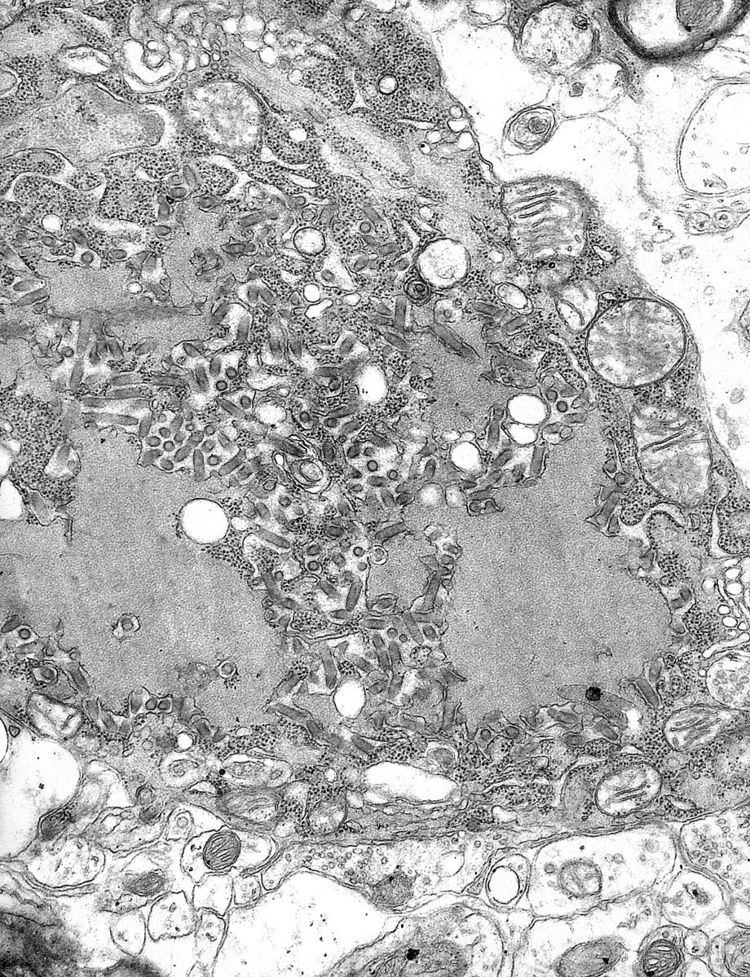 | ||
Rabies is mostly transmitted to humans, and between animals, through the saliva of infected animals. Transmission is generally through a bite from any infected animal.
Transmission between humans is extremely rare, although it can happen through organ transplants, or through bites.
After a typical human infection by bite, the virus enters the peripheral nervous system. It then travels along the nerves towards the central nervous system. During this phase, the virus cannot be easily detected within the host, and vaccination may still confer cell-mediated immunity to prevent symptomatic rabies. Once the virus reaches the brain, it rapidly causes encephalitis and symptoms appear. This is called the "prodromal" phase and at this time, treatment is usually unsuccessful. Rabies may also inflame the spinal cord producing myelitis.
Animals
In 1932, Dr. Joseph Lennox Pawan of Trinidad in the West Indies first discovered that infected vampire bats could transmit rabies to humans and other animals. Any mammal may become infected with the rabies virus and develop symptoms, including humans. Most animals can be infected by the virus and can transmit the disease to humans. Infected bats, monkeys, raccoons, foxes, skunks, cattle, wolves, dogs or cats provide the greatest risk to humans. Rabies may also spread through exposure to infected domestic farm animals, groundhogs, weasels, bears and other wild carnivores. Small rodents such as squirrels, hamsters, guinea pigs, gerbils, chipmunks, rats, and mice and lagomorphs like rabbits and hares are almost never found to be infected with rabies and are not known to transmit rabies to humans.
The virus is usually present in the nerves and saliva of a symptomatic rabid animal. The route of infection is usually, but not necessarily, by a bite. In many cases the infected animal is exceptionally aggressive, may attack without provocation, and exhibits otherwise uncharacteristic behaviour. (Note that "uncharacteristic behaviour" may include uncharacteristic friendliness as well as the stereotypically violent mode of rabies. Since rabies can be transmitted through contact with saliva, not just through bites, this "tame" mode of rabies is no less dangerous.) Transmission may also occur via an aerosol through mucous membranes; transmission in this form may have happened in people exploring caves populated by rabid bats.
